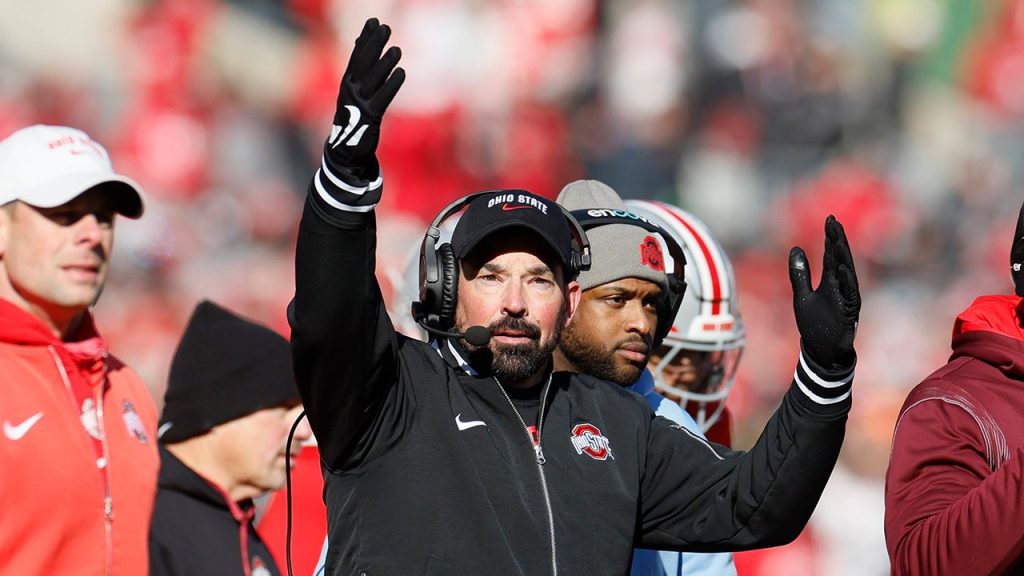The final week of the 2024 regular college football season, dubbed “hate week” by passionate fans, showcased an array of intense rivalry games across the country, culminating in a series of unexpected physical confrontations. Events spiraled out of control, starting at the Michigan-Ohio State game, continuing through the North Carolina-North Carolina State clash, and culminating in the heated Florida-Florida State rivalry. Even Arizona State got involved with a demonstrative planting of a pitchfork in enemy territory. The escalating tensions featured surprising outcomes and amplified emotions, with the actions on the field illustrating the deep stakes involved in these storied matchups.
Among the clear winners of the weekend were South Carolina and Syracuse. South Carolina notched a crucial victory against Clemson in an intense finish, reinforcing their position as potential playoff contenders. Head coach Shane Beamer’s team, led by emerging quarterback LaNorris Sellers, showcased resilience, setting themselves up for a chance at further upheaval in the rankings. Syracuse, on the other hand, created chaos in the ACC by defeating Miami, which significantly altered the conference title landscape, allowing Clemson a pathway to the championship game. Penn State also capitalized on Michigan’s victory over Ohio State to secure a spot in the Big Ten Championship with a convincing win against Maryland.
Texas had an impressive run in its first year in the SEC, defeating a competitive Texas A&M team. The Longhorns exhibited their prowess throughout the game, with standout performances from new talents like Arch Manning, showcasing the bright future of the program. Notre Dame celebrated a major achievement as well, clinching a place in the inaugural 12-team College Football Playoff after a hard-fought win against rival USC. Their successful campaign was punctuated by a 10-game winning streak, marking a significant turnaround for the Fighting Irish. Quarterback Kyle McCord earned personal glory, leading Syracuse to a remarkable comeback against Miami, while also reflecting on his departure from Ohio State, which further added to his triumphant narrative.
The weekend also produced notable losers, with Ohio State suffering a damaging defeat against Michigan. Entering the game as heavy favorites, the Buckeyes’ loss led to serious scrutiny regarding head coach Ryan Day’s tenure in Columbus. Now 0-4 against Michigan, his position is increasingly precarious, with questions around his ability to transition the program back to elite status mounting. Meanwhile, Texas A&M floundered in their match against Texas, struggling offensively despite expectations after a revived rivalry. Also falling short were Auburn, who faced a humiliating loss to Alabama in the Iron Bowl, another instance of a higher-ranked team asserting their dominance.
Kansas, after achieving a rare winning streak against ranked opponents, stumbled at the worst possible moment, unable to secure a bowl game following their loss to Baylor. These disappointing outcomes reflected not just missed opportunities for a bowl appearance but a bigger picture of stability and growth that these programs lacked. The fallout from these games highlighted the volatility inherent in college football, with teams experiencing rapid shifts in fortunes during such crucial contests.
Controversy also erupted from the sport’s passionate rivalries as on-field celebrations, including flag plants at midfield, led to scuffles among players. Following the explosive Michigan-Ohio State game, confrontations intensified, suggesting that what had been perceived as light-hearted rivalry antics had grown overly aggressive. The possibility of banning flags from the sidelines was floated for the 2025 season, underscoring a growing apprehension about how playful gestures were spiraling into an unwelcome reality. The fervor in college football continues to prompt fervent debates about preserving tradition while ensuring the safety and sportsmanship of the game.
As the season concluded, the narratives from the weekend encapsulated both the triumphs and tribulations of college football. Teams like South Carolina, Notre Dame, and Syracuse thrived, positioned for extended opportunities in playoffs and title pursuits. Conversely, programs like Ohio State, Texas A&M, and Kansas found themselves at difficult crossroads, reassessing their strategies and future directions in light of harsh defeats. The clash of emotions, fierce rivalries, and physical confrontations relate a quintessentially chaotic reality of college football that remains beloved by fans even amidst the turmoil.










